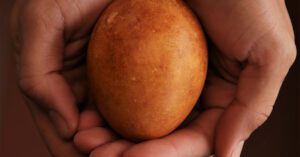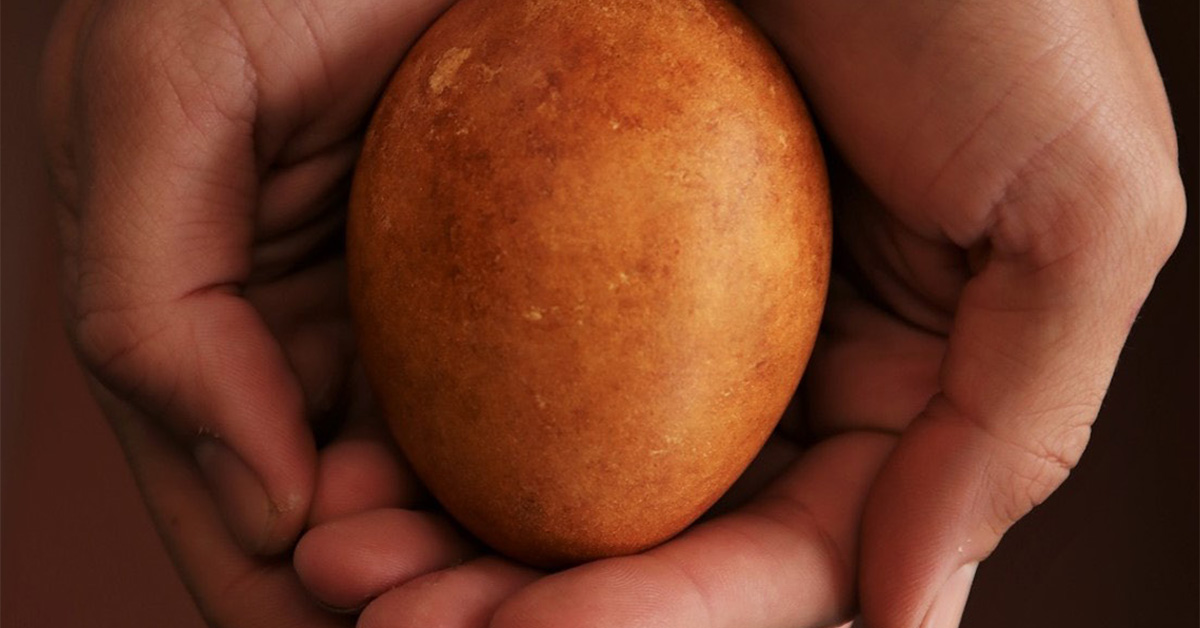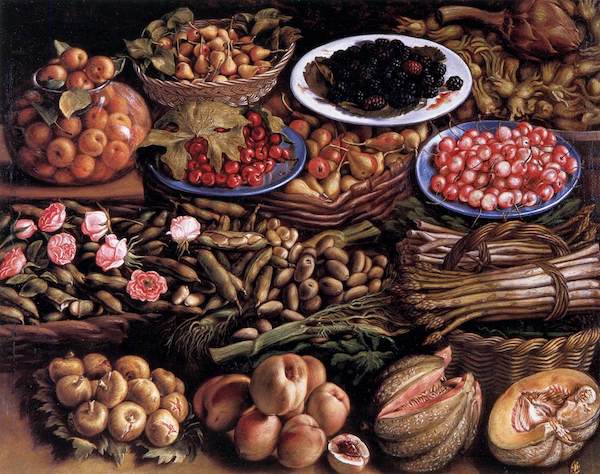

Diana Salgado is a Christian food engineer working on projects to decrease food waste in the UK.

Recently my husband, a plant lover, decided that growing ordinary potatoes and courgettes in the garden was not risqué enough, and took us into the realm of heritage seeds. Also called heirloom varieties, these are vegetable cultivars that have been maintained for at least fifty years, usually without commercial support. They have typically arisen through a gardening family or community collecting seeds from their crops year after year, perhaps sharing and swapping them within the community. The result is a variety that is adapted to local conditions of climate, soil, pests and diseases – and, no doubt, people’s aesthetic preferences. As a result, they often produce plants with distinctive features like unusual colours, patterns, shapes and sizes, as well as particular culinary uses. So far, so good: a fine example of the cultural mandate in action as people steward and cultivate the genetic resources of plants.
In the UK and the European Union, however, it’s illegal to sell crop varieties unless they are included in a national list of approved varieties for an annual fee that seed suppliers need to cover. The laudable intention of the legislation, dating from the 1970s, is another form of stewardship: to manage what could be a chaotic market of often similar varieties traded under confusing names. A side effect, however, is the loss of genetic diversity: one kind of stewardship at loggerheads with another. Anyway, in this part of the world, “heritage” normally refers to varieties that cannot be found in shops or regular seed catalogues. How, then, did we acquire such seeds?

The answer lies in our membership of a scheme that supplies free heritage varieties. The Heritage Seed Library has a catalogue with a difference: no glossy photos or special promotions; varieties with more whimsical names than we’re used to; free seeds. How does this work? Each member pays an annual membership fee, and may choose six varieties each year on a first-come, first-served basis. The seeds duly arrive in little brown envelopes with block-printed names – then it’s up to us to grow them!
What would grow from such mysterious seeds? In most cases, pretty normal plants emerged – such as Mr Fearn’s Purple Flowered French beans and Uncle Bert’s Purple Kale (purple seems to be a heritage hue). We also tried Cantalun melon (why not?) and were rewarded with a mini specimen – its diminutive proportions probably due to Uncle Bert and some broccoli smothering that part of the vegetable patch, indeed giving Mr Fearn a hard time too. When we finally dared to harvest and try it, the mini melon was reassuringly familiar: a sweet, orange-fleshed cantaloupe. But the star of our show was Georgia Candy Roaster. Three squash plants germinated nicely and grew into fine trailing plants that sneaked along the garden path and across the potato patch. It gradually became clear that each plant was maturing one large fruit, with a respectable oval shape and tan colour. And the culinary experience? Despite its middle name, the cooked flesh tasted anything but sweet. But the most striking feature of this fruit was the large, fat seeds. When cooked with the flesh, they resembled broad beans (including the creamy texture) – not my favourite, so imagine my face!
Yet redemption was at hand! When baked on a tray in the oven, the seeds were deliciously crunchy with a nutty roast flavour, enhanced by a little salt. Additionally, the flesh is a wonderful mashed potato substitute. Do try my recipe for fish pie made with a non-sweet heritage squash.
FISH PUMPKIN PIE
Ingredients
1 kg Georgia Candy Roaster squash
25 g dairy-free butter
4 spring onions, finely sliced
400 g white frozen fish (cod, haddock or both)
1 tsp salt
3 medium-sized carrots
1 small can of drained sweetcorn
½ small can of drained petits pois
1 broccoli head
150 g dairy-free grated cheddar
Preparation
Cut the squash in pieces and put them in a saucepan. Pour over enough water to cover them. Bring to the boil and then simmer until tender.
When cooked, drain and mash with the dairy-free butter and add salt. (Add pepper if you wish.) Set aside.
Heat the oven to 200°C/fan 180°C/gas mark 6.
Wash and cut the vegetables into small bite-sized pieces.
Put the frozen fish, all the vegetables and salt in a saucepan. Cover with the lid. Cook until everything is tender and most of the water has evaporated. (Remove the lid if necessary.)
Spoon into an ovenproof dish of 25x20x8 cm.
Spoon the squash on top and sprinkle with the dairy-free cheddar cheese.
Pop in the oven for 20–25 mins or until golden.

Get the latest issue in print or subscribe for the next three.
The Kirby Laing Centre for Public Theology in Cambridge. Charity registered in England and Wales. Charity Number: 1191741
Kirby Laing Centre, Office 1, Unit 6, The New Mill House, Chesterton Mill, French’s Road, Cambridge, CB4 3NP
© 2025 The Kirby Laing Centre for Public Theology in Cambridge